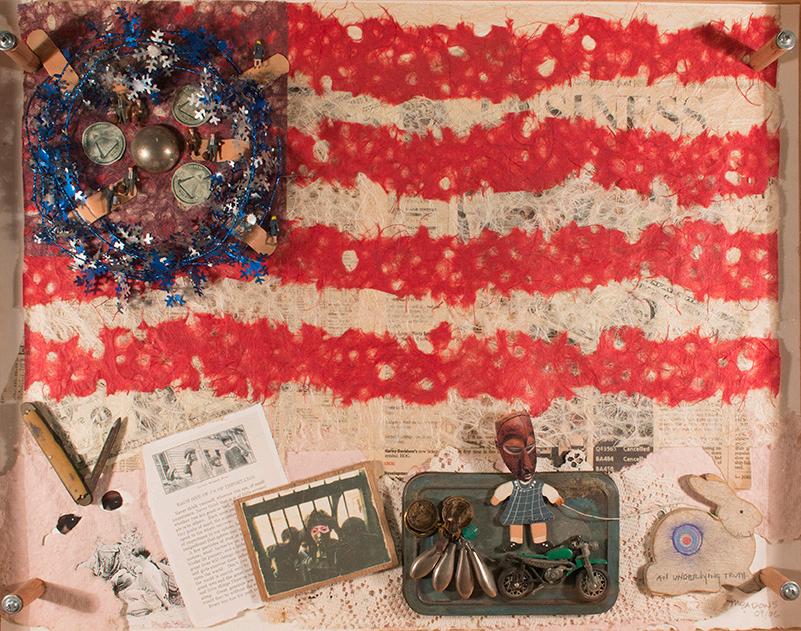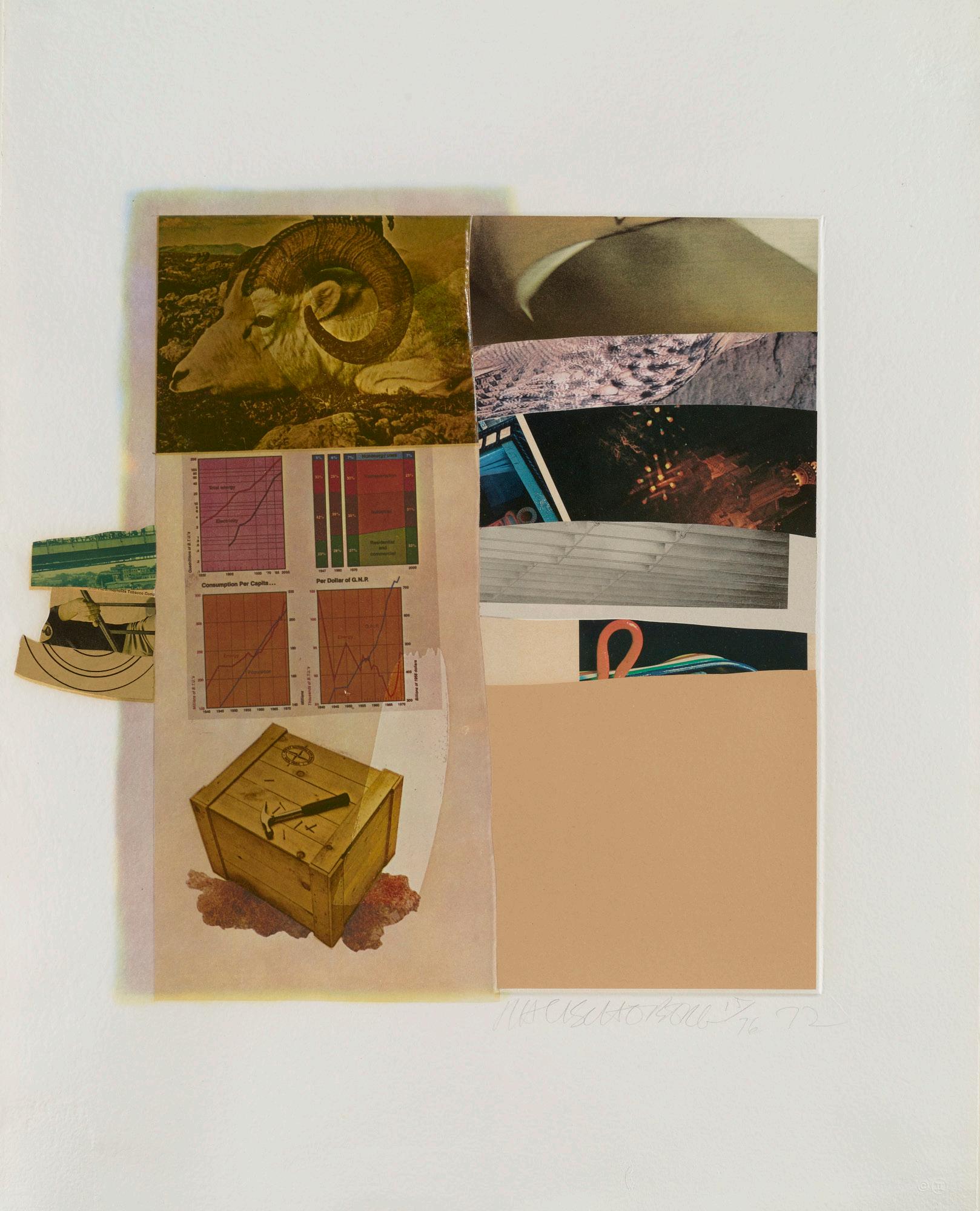FAKE NEWS + MEDIA MANIPULATION
Can journalists be trusted? Which journalists, and on what topics? Does journalism have a slant for and against any political beliefs, races, ethnicities, genders, or other categories of person? How have artists helped to shape the discussion around the reliability of the media? The term “fake news” is of relatively recent vintage, but ever since the rise of the idea of a free press during the eighteenth and nineteenth centuries people have been skeptical of the sources where they get their news. Artists working in a variety of mediums have engaged in their own forms of media criticism, using the power of creative expression to comment on not only the veracity but the ideological positioning of a variety of journalistic and propagandistic people and institutions. This artistic engagement with the news goes back many years, though it has been a particularly strong focus for contemporary artists in the digital age.

William James Glackens (American, 1879-1938)
Glackens takes a piquant view of the Four Hundred (a name for the most wealthy and influential individuals in New York City) and their relationship to the tabloid journalism of the day. The term “yellow journalism,” used in the title, was developed in the period to refer to sensationalist headlines created by the media to keep newspapers in circulation.

Accession Number: 1987.57.1
Title: Our American Snobs: The relation of Yellow Journalism to Its Own Creation, the Four Hundred
Date: 1903
Medium: Ink and graphite
Rights: Public domain

KEYWORDS
yellow journalism, tabloids, wealth, inequality, social critique; news; media.
VIEW OBJECT FILE
Josh Kline (American, b. 1979)
Josh Kline’s work interrogates the nature of American identity and patriotism in the era of reality TV. Consisting of polyurethane casts of imported televisions—mostly made by Samsung and L.G.—covered in nylon American flags, the Reality Television series prompts viewers to consider the intertwined nature of televised patriotism and the global commodity markets.
Accession Number: 2019.2.26
Title: Reality Television 7
Date: 2019
Medium: Nylon flags, polyurethane, epoxy, microfiber, mounting hardware

Rights: Image courtesy of Modern Art Ltd.

KEYWORDS
television, American flag, patriotism, nationalism, media criticism; news; media.
VIEW OBJECT FILE
Emory Douglas (American, b. 1943)
Emory Douglas was the editor of The Black Panther andtheMinisterofCulturefortheBlackPantherParty. Originally published in that newspaper, his posters present a bold vision of Black Power suffused with the aesthetics of global anti-imperialism.

Accession Number: 2017.15.7
Title: Warning to America-We are 25-30 million strong
Date: 1970
Medium: Offset lithograph on paper

Rights: © 2022 Emory Douglas/Artists Rights Society (ARS), New York
KEYWORDS
Black Panthers; Black Power; Black is beautiful; anti-imperialism; propaganda; independent journalism; news; media.
VIEW OBJECT FILE
Jerome Meadows (American, b. 1951)
The American flag, which dominates the composition, is covered with found objects such as bandaids, children’s toys, photographs, suggesting the tension between innocence of the American public and the ever-present political, sociological and cultural issues in our country. The title of the work, inspired by the 2006 documentary by former Vice-President Al Gore, An Incovenient Truth, encourages us to look beyond the surface and seek the truth.

Accession Number: 2015.2.3
Title: An Underlying Truth
Date: 2008

Medium: Mixed media collage
Rights: Image courtesy of the artist
KEYWORDS
american flag; political unrest; high/low; patriotism; fake news; (dis)information; news; media.
VIEW OBJECT FILE
Robert Rauschenberg (American, 1925-2008)

An amalgamation of found images, ephemera, and excerpts from the media, works from this series of lithographs were likened to the experience of watching “many television sets working simultaneously, all tuned in differently.” By grouping these images together, the artist overwhelms the viewer with information and recreates the experience of receiving an abundance of news in the era of mass media.
Accession Number: 1990.7
Title: Horsefeathers Thirteen-I (Ram’s Head)
Date: 1972
Medium: Lithograph, silkscreen, pochoir and collage on embossed paper
Rights: © 2022 Robert Rauschenberg/Artists Rights Society (ARS), New York

KEYWORDS
fake news; media; information; news.
VIEW OBJECT FILE
An-My Lê (Vietnamese American, b. 1960)
An-My Le’s practice focuses primarily on capturing the experiences and landscapes of war, often through rehearsals and memories. This photograph belongs to a series documenting military training in a virtual “Middle East” erected in the California desert. At a critical distance from the acts of war, the artist forces us to contemplate its impact and aftermath, as well as the relationship between real and imagined in collective and individual memories.

Accession Number: 2013.34.84
Title: 29 Palms: Force Recon
Date: 2003-2004
Medium: Silver gelatin print

Rights: Image courtesy of the artist and Murray Guy, New York
KEYWORDS
Iraq war; reenactment; performance; fake news; photography; (dis)information; news; media.
VIEW OBJECT FILE
Matthew Brannon (American, b. 1971)
This painting, part of a series on the Vietnam War, investigates the relationship between protesters (radicals) and the US government (establishment) in the media. The seriousness of Foreign Affairs, a leading source in American foreign policy, contrasts the light and fun coverage of Vogue, a popular fashion magazine. The Vogue cover features Jane Fonda, famous not just for her acting career but also as a fierce protester of the Vietnam war.

Accession Number: 2018.1.11
Title: Éphémère (Radicals and Establishment)
Date: 2018

Medium: Oil on linen, UV pigment print
Rights: Image courtesy of the artist and Casey Kaplan Gallery
KEYWORDS
Vietnam war; popular culture; news; (dis) information; media.
VIEW
OBJECT FILE
Fred Tomaselli (American, b. 1956)
Part of a series directly inspired by The New York Times, this work examines perception and the complex relationship between image and text. Here, the artist covers a photograph of Syrians fleeing the ancient city of Aleppo with a blue star pattern evoking the decorative motifs on architecture of the region. The discrepancy between text and image suggests the fragility of both lives and structures impacted by political upheaval and turmoil.
Accession Number: 2013.34.58
Title: July 25, 2012
Date: 2012

Medium: Gouache on printed watercolor paper
Rights: © Fred Tomaselli. Image courtesy of the artist and James Cohan Gallery, New York/Shanghai

KEYWORDS
journalism; news; fake news; (dis)information; politics; war; media.
VIEW OBJECT FILE
ADDITIONAL WORKS

Fred Tomaselli, Jan 26, 2013, 2013
Fred Tomaselli, April 9, 2020, 2020
Fred Tomaselli, May 2, 2012, 2012
Matthew Brannon, Ephemere (Cambodia), 2018
Matthew Brannon, Concerning Vietnam: Situation Room-February, 1965, 2016
An-My Le, Small Wars (Rescue), 1999-2002
An-My Le, Gai Lai, 1994

